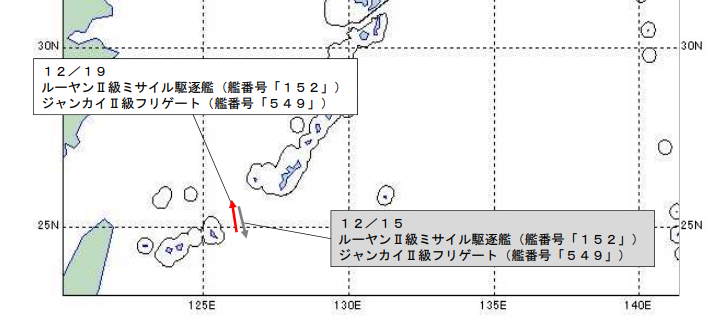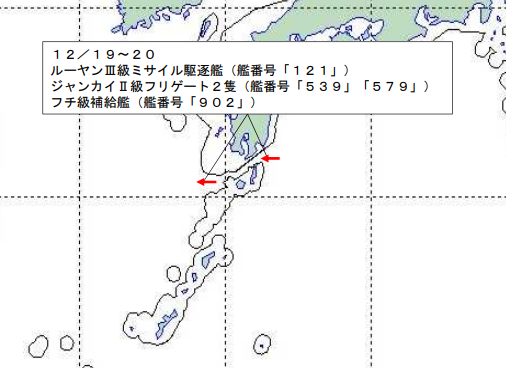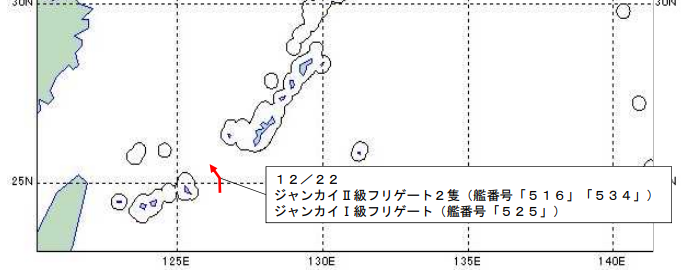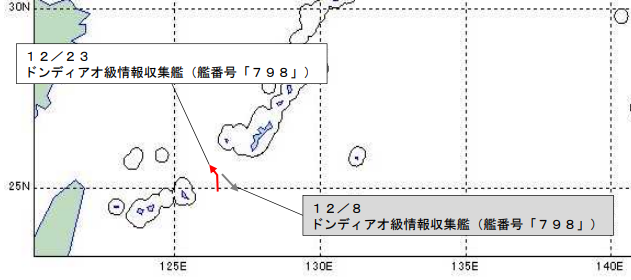|
Monthly Column
by
Tomohide MURAI
Honorary Professor, Tokyo International University
Threats come from Revisionist Neighbors
What is threat?
Threat is a multiplication of military capability and aggressive intent. Therefore, in the case that the country has strong military capability but has no intention to attack Japan, then that
country is not a threat to Japan.
What is intention? In democratic countries, the intention of the country means the intention of the people, but in dictatorship country, it means the intention of the dictator. Looking at
the present world, the intention of the country comes from the view of the world which was created by the history and culture of the country. Considering the intention, whether the country has the revisionist worldview or the status quo worldview is the
critical point for threat. If that country has the status quo worldview, it can be said that the country is satisfied with the situation of the present world and there is a low possibility that the country would go to war and sacrifice the benefit which comes
from the present world. On the other hand, the revisionist countries are basically dissatisfied with the present world order. And in many cases, those countries have victim complex to the neighboring countries and hate neighbors.
Hatred and victim complex paralyze the casualty sensitivity and lower the threshold of the war. When hatred and victim complex exceed the casualty sensitivity, war begins.
Threats to Japan
Looking at the present world, only the United States can project large scale military forces beyond neighboring countries. Even Russia and China do not have such military capabilities. On the
other hand, even a small country can attack neighbors. Therefore, for all countries in the present world, neighboring countries and the U. S. can be a threat. In the case of Japan, the U.S. and neighboring countries, such as Russia, China, ROK and DPRK are
the candidate countries which can threaten Japan.
What is the intention of the neighboring countries of Japan?
The United States: The fundamental national strategy of the U.S. is to become the hegemon in the world, which
is “Make America Great Again.” Now the hegemon of the world is the U. S. Therefore, the national strategy of the U.S. is to maintain status quo. Which means that even though the U.S. has enough military capability to attack Japan, the U.S. is not a threat
to Japan. And furthermore, the U.S. is a Japanese ally.
Russia: The national strategy of President Putin is “Make Russia Great Again.” What is Great Russia? Probably
for President Putin, it means USSR which was the largest Russian Empire in Russian history. For that reason, what President Putin is thinking is to recover the USSR territories which were lost by the expansion of the West. President Putin thinks that Russia
is a victim of the expansion of the West. Therefore, for President Putin, justice is to take back the lost USSR territories and revive Great Russia. According to the public opinion poll in Russia last year, more than 70% of Russians supported the national
strategy of President Putin.
Where are the lost territories? Comparing the maps of USSR and present Russia, the western areas of USSR were lost. In the image of President Putin, Ukraine, Belorussia and Baltic countries
are the lost territories of Russia. For that reason, President Putin began war to redraw the borderline and recover the lost territories of USSR. But on the other hand, there is no change in eastern borderline between USSR and present Russia. President Putin’s
strategy to the eastern border is to defend the present borderline. Which means President Putin wants to maintain status quo in east Asia. Therefore, for eastern Europe which is the western side of Russia, Russia is a serious threat to the security. But for
the country of eastern side of Russia, basically Russia is a status quo power.
North Korea: The most important objective of DPRK government is to defend the present regime in north Korea.
The Constitution of DPRK said the most important national objective was reunification of the Korean Peninsula. But comparing the north and south economies, south Korean economy is more than ten times larger than that of north Korea. And in these days, even
in military capability, south Korea has advantage. In reality there is no possibility for north Korea to occupy south Korea in near future.
Under these circumstances, DPRK dictator Kim Jong-Un has changed the constitution, and declared that DPRK is an independent country. To show his determination to go as an independent country
and he has no intention to invade south Korea, he blew up the roads and railways which connected north and south Korea. North Korea has transformed into a defensive status quo country from an aggressive revisionist country.
South Korea: South Korea has the same constitution as north Korea, which says the final goal of south Korean
national strategy is reunification of Korean peninsula. But now in south Korea, there is no atmosphere of pursuing reunification at the expense of economic prosperity. Now south Korean people give priority to economic prosperity rather than legitimate national
reunification. South Korea wants status quo.
China: Slogan of the Chinese Communist Party is “Make China Great Again.” What is Great China? Looking at the
history of China, the largest Chinese Empire was Qin Dinasty in 19th century. For that reason, for many Chinese people, the image of Great China is Qin Dynasty which occupied one third of world GDP in 19th century. Then what is the deference between Qin
and present China? Looking at the territories of these two countries, present China lost the eastern and southern part of Chinse Empire (Qin). Therefore, for Chinese people’s image, to become Great China means to recover the territories of Qin Dynasty. Actually
what China is doing now is not to change the borderline, but to expand its sphere of influence in east and south Asia. In the case of Japan, China is now trying to change the borderline with Japan. This strategy is clearly a revisionist strategy and directly
threaten Japanese security.
Conclusion
Considering the situation of neighboring countries and the U.S., China is the only country which is trying to change the status quo surrounding Japan. And China has enough military capability
to threaten Japan. Therefore, for the security of the country, Japan needs to prepare for the threat from China.
|
Statistical Data and Analysis
(as of December 29)
|
|
|
|
Russian and Chinese military activity around Japan increased in December. In late December, Japan and China hold the Foreign Minister’s meeting in Beijing. Japan
and China agreed to make joint efforts to reduce concerns and increase cooperation and coordination. However, Chinese Coast Guard’s vessels repeatedly enter the waters around the Senkakus including Japanese territorial waters. As of December 29, the number
of Chinese Coast Guard’s vessels entering the contiguous zones around the Senkakus had reached 353 days in a year. This is the highest frequency since the nationalization of the Senkaku Islands.
[Statistical Data as of December 26]
|
|
Japan Coast Guard (JCG) daily updates the statistical data on the number of China Coast Guard vessels entering in the contiguous zone around the Senkaku Islands
and intruding into Japanese territorial waters. The below is from the website of JCG.
(https://www.kaiho.mlit.go.jp/mission/senkaku/senkaku.html)
|
Dec.
|
Contiguous zone
|
Territorial
sea
|
Dec.
|
Contiguous zone
|
Territorial
sea
|
|
1
|
2
|
|
17
|
4
|
|
|
2
|
4
|
|
18
|
4
|
|
|
3
|
2
|
|
19
|
4
|
|
|
4
|
3
|
|
20
|
4
|
|
|
5
|
4
|
3
|
21
|
2
|
|
|
6
|
8
|
4
|
22
|
2
|
|
|
7
|
4
|
|
23
|
4
|
|
|
8
|
4
|
|
24
|
4
|
|
|
9
|
4
|
|
25
|
2
|
|
|
10
|
4
|
|
26
|
2
|
|
|
11
|
4
|
|
27
|
|
|
|
12
|
4
|
|
28
|
|
|
|
13
|
4
|
|
29
|
|
|
|
14
|
4
|
|
30
|
|
|
|
15
|
4
|
|
31
|
|
|
|
16
|
4
|
|
|
|
|
|
|
Date
|
Topics
|
|
12/17
|
|
|
|
Japan and the United States conducted the joint military drill in the Sea of Japan, the East China Sea and the Western Pacific on December 16. This drill involved Japanese
F-15 fighters and US B-52 bomber, F-35A, F-18, F-22, F-16 fighters and EA-18Gs.
|
|
Japan Joint Staff
https://www.mod.go.jp/js/pdf/2024/p20241217_01.pdf
|
|
|
12/19
|
Japan Maritime Self-Defense Force (JMSDF) has confirmed
two Chinese Naval vessels: Luyang-II class destroyer (hull number 152) and Jiangkai-II class frigate (hull number 549) sailing north in the water 90 km northeast of Miyako Island on December 19. These vessels crossed the Miyako Strait and navigated to the
East China Sea.
 (source: Japan Joint Staff)
(source: Japan Joint Staff)
Japan Joint Staff
https://www.mod.go.jp/js/pdf/2024/p20241219_01.pdf
|
|
12/20
|
Japan Maritime Self-Defense Forces (JMSDF) has confirmed four Chinese Naval vessels: one Luyang-II destroyer (hull number 121), two Jangkai-II class frigates (hull number 539 and 579) and Fuchi class oiler (hull number 902) sailing west in
the water 50 km northeast of Tanega Shima (Kagoshima Prefecture) on December 19. These vessels crossed the Osumi Strait and navigated to the East China Sea.
 Japan Joint Staff
Japan Joint Staff
https://www.mod.go.jp/js/pdf/2024/p20241220_02.pdf
|
|
12/23
|
|
JMSDF has confirmed three Chinese Naval vessels: one Jangkai-II class frigates (hull number 516 and 534) and Jangkai-I class frigate (hull number 525) sailing
north in the waters 100km east of Miyako Island (Okinawa Prefecture) on December 22. These vessels crossed the Miyako Strait and navigated to the East China Sea.
 (Source: Japan Joint Staff)
(Source: Japan Joint Staff)
|
|
|
|
Japan Joint Staff
https://www.mod.go.jp/js/pdf/2024/p20241223_01.pdf
|
|
|
12/24
|
JMSDF has confirmed one Chinese Dongdiao class Intelligence ship sailing north in the waters 120km west of Miyako Island (Okinawa Prefecture) on December
23. This vessel then crossed the Miyako Strait and navigated to the East China Sea.
 (Source: Japan Joint Staff)
(Source: Japan Joint Staff)
________________________________________
Japan Joint Staff
https://www.mod.go.jp/js/pdf/2024/p20241224_01.pdf
|
|
12/25
|
Japanese Foreign Minister, Takeshi Iwaya visited Beijing and met with his counterpart Wang Yi on December 25. At the meeting, two ministers confirmed the
promotion of “Mutually Beneficial Relationship Based on Common Strategic Interests” and to joint effort to reduce issues and concerns and increase cooperation and coordination.
At the meeting, FM Iwaya conveyed Japan’s serious concerns about the situation in the East China Sea including the situation surrounding the Senkaku Islands.
He also demanded that China remove the buoys installed near Yonaguni Island (Okinawa Prefecture).
FM Iwaya also reiterated that “peace and stability across the Taiwan Strait is extremely important for the international community, including Japan.”
________________________________________
Ministry of Foreign Affairs of Japan
https://www.mofa.go.jp/a_o/c_m1/cn/pageite_000001_00718.html
NHK world
https://www3.nhk.or.jp/nhkworld/en/news/20241225_12/index.html
|
|
12/28
|
Chinese Foreign Ministry confirmed that China installed the buoy in the waters south of Yonaguni Island on December 27. China refused to remove the buoy as
requested by Foreign Minister Iwaya at the Japan-China Foreign Ministers’ meeting. China insisted that its installation of the buoy is for meteorological observation, and it is a rational and legal activity.
________________________________________
NHK News (Japanese)
https://www3.nhk.or.jp/news/html/20241228/k10014681601000.html
The Sankei Shimbun
https://www.sankei.com/article/20241225-AM4CYBQB75PKRELCM6SQZNNACQ/
|
|
12/29
12/30
|
As of December 29, the number of days that Chinese Coast Guard’s vessels entering the contiguous zones around the Senkakus had reached 353 days in a year.
This is the highest frequency since the nationalization of the Senkaku Islands. On December 30, the Japan Coast Guard confirmed the Chinese Coast Guard vessels around the Senkakus. As a result, the number of days was extended to 354 days.
________________________________________
NHK News (Japanese)
https://www3.nhk.or.jp/news/html/20241229/k10014682141000.html
The Kyodo
https://nordot.app/1246280450936570794?c=302675738515047521
|
|
|
|


 MENU
MENU
 閉じる
閉じる